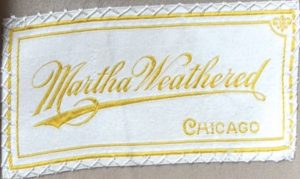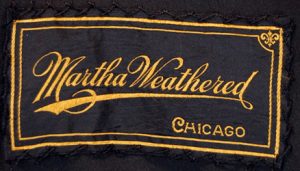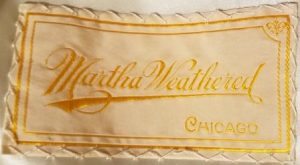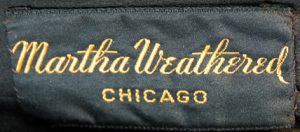Martha Weathered was a high-end women’s retailer on Chicago’s Michigan Avenue. Martha Weathered learned the fashion business from many sources. First there was her mother Beatrice, who was a dressmaker; then she worked as a buyer of women’s suits at Marshall Field until 1918, when she became a buyer of misses dresses for Charles A. Stevens. In 1921 Martha borrowed money from relatives to open a fashion shop in the famous Drake Hotel, selling millinery and clothing. She advertised in 1921 to hire a professional seamstress in the Chicago Tribune as well as placing display ads for the shop. She described the shop as an importer of fashion. It is claimed that Martha was one of only two suppliers in Chicago that had won the trust of French Designers to represent their designs. The dresses were originally designed, then the patterns and fabrics were sent to Martha’s shop for fabrication, this way avoided high taxes on imported goods and purchases of custom-fitted dresses. By 1923 Martha had expanded the retail business to a second location across the street. Martha died in 1941, but the family kept the business and continued until 1971, when the building burned and was torn down.
Courtesy of the Oshkosh Museum




